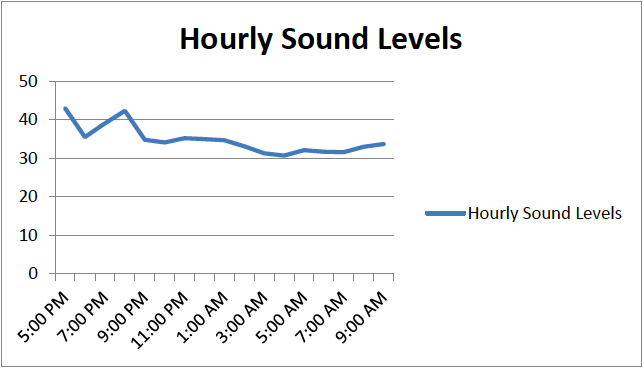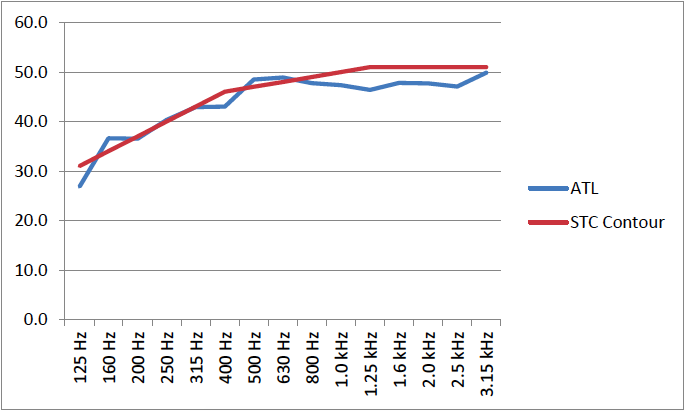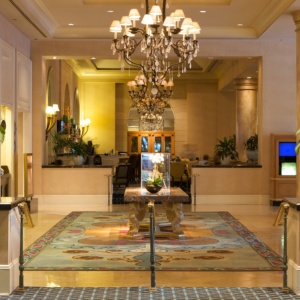An upscale hotel reached out to Commercial Acoustics because they had been experiencing noise complaint issues since opening 3 years ago. There were a number of guest complaints regarding noise, from thin walls between adjacent neighbors, to loud music outside and noisy street traffic.
Hotel Acoustical Consulting
During this time period, the hotel has used GSS (Guest Satisfaction Survey) Scores and comments to determine the areas in which noise complaints had derived. The hotel team’s initial observation is that the windows are transmitting noise and that the hotel doors are loud and disturbing the clients. The speakers at the hotel bar are also creating complaints for guests staying within that vicinity. By completing a detailed acoustic assessment for the client, and prioritizing the primary noise sources, we were able to create a mitigation plan of action at the hotel.
Learn more about our Acoustic Consulting Services
As these sound transmission issues are post-design and -construction there are limited design modifications and testing is required for successful recommendations to be made. Freeway & Roadway traffic noise, impact doors closing, loudspeakers, etc. can all generate airborne and structure-borne noise levels louder than other typical sources (speech, television, walking, etc.).
During our walkthrough performed on April 26, 2017 we confirmed with our Class 1 SPL (Sound Pressure Level) Meter that the majority of the sound in several rooms was being transmitted through the windows and sliding glass doors of the rooms. In addition to sound transmission the hotel doors were quite loud and vibrating the interior corridor walls when shut. The speakers in the hotel bar were directly mounted to the concrete allowing direct propagation of structural vibrations into the rooms nearby – this was confirmed with the corresponding noise complaints often filed in this area.
Hotel Acoustic Testing Sample
Test Method:
The following rooms were tested during the evening of May 26, 2017. A class 1 SPL meter was placed in room 359 to determine the peak noises occurring throughout the evening from the hotel bar. Hourly tests were conducted in rooms 310 and 231 to measure traffic noises. Qualitative data was measured in room 231 and room 310 as well, including how many audible noises were detected over a 1-hour span.
Test Results:
During that time, the most common audible noise from outside the room was Street Traffic, where a car could be heard passing almost every minute on average. While the cars could be heard above any background noise (Air Conditioning provided a background level of approximately 40 dBA), the sounds often did not exceed 55 dBA on the east side. Street Traffic was more disruptive on the express way side.
Note, the testing for each room was for 60 minutes, and done concurrently. There were other miscellaneous peaks in noise that occurred, including occasional toilet flushing or talking from exterior sidewalks, but these occurred infrequently and at low dB values.
As indicated in the tables above, windows facing the expressway were consistently louder than those facing east side. These were monitored throughout the night, and were measured at 47.1 dBA on the expressway, versus 40.6 dBA on the east, on average. The readings from the expressway were also characterized by higher dynamic ranges (larger differences between quiet and loud) that typically correspond with more complaints.
It should be noted that while the vertical shades in each room are effective at blocking light, they made little or no difference in the sound level coming through the windows.
Doors being slammed were a consistent, disruptive event throughout the night in all 3 rooms. It was noted during the walk-through that the doors are quite heavy, and while that improves the attenuation from the door itself, they make a loud thud when closed due to the lock of door closers.
Summary: Primary Issues and Mitigations
In order to save unnecessary cost, it is recommended to perform a brief follow-up study with a pilot room window to determine exactly how many of the hotel windows should be reinforced. This may not be necessary for many of the windows that do not directly face the east side or the expressway. There are several options to improve the STCs of the windows, with various costs and STC improvements associated with each.

Figure 1: dBA Values in Room 359 by Hour
Apparent Sound Transmission Class (ASTC) Testing:
Description of Test:
1. Airborne Test (ASTC) was performed in accordance with ASTM E336 between units 210 and 212 through the shared wall
a. This test was used to determine how much sound the wall assembly blocks between adjacent units.
b. The wall assembly tested was presumed to be, but not confirmed:
i. 1 Layer of 5/8” Type X Drywall One Side, 2 Layers of 5/8” Type X Drywall One Side, 25-Gauge Steel Studs 16” o.c. and R-13 fiberglass insulation batting in the cavity
ii. The wall assembly also included a solid-core door in the center, a 4” air gap, and another solid-core door. The doors did not have door sweeps or solid thresholds, but instead lightly grazed the carpeting as they closed.
Summary Findings & Recommendations:
The tests indicated an ASTC value of 47 for the walls separating rooms 210 and 212. While this number is above the Florida Building Code for multi-family units (requires a field value of 45), it just below what is typically implemented in hotel designs (design values of 55 to 60).
After testing was complete, a brief leak check was performed to determine where the majority of the sound was located. In the case of the first room, the sound level at the wall was 42 dBA, but reached 46 dBA at the door, and 48 dBA at the base of the door. This indicates that a more substantial door sweep or threshold may be sufficient to reduce noise coming through the entire wall assembly.
Likewise, the doors into the hallway measured 62 dBA at the door, and 69 dBA at the base. A more substantial door sweep or threshold at this location may also further reduce the noise being transmitted from the corridor to the rooms.
Statement of Conformance:
Airborne sound attenuation tests were conducted in accordance with the provisions of ASTM E336-16, Standard Test Method for Measurement of Airborne Sound Attenuation between Rooms in Buildings. Sensitivity checks were performed before and after testing to ensure the equipment was properly calibrated.
The testing described, the results calculated, and this report fully comply with the requirements of ASTM E336-16. No exceptions were made during this test.
The results stated in this report represent only the specific construction and acoustical conditions present at the time of the test. Measurements performed in accordance with this test method on nominally identical constructions and acoustical conditions may produce different results.
The test environment consisted of a furnished hotel room that included a living area. The source side of the experiment was in room 210. The two rooms were mirrored around a separation wall, with length 26 feet, width of 13 feet, and height 9 feet.
All doors were closed to the adjacent spaces.
A Nor131 Sound Pressure Level meter was used for all tests, Serial # 1313740, last calibrated on October 10, 2016. A Nor1251 Sound Calibrator was used for sensitivity checks, Serial # 34824. The meter and calibrator were hand-held.
A Pyle 18” Loudspeaker was used as the sound source for the ASTC tests, with white noise as the sound type.
Appendix A: ASTC Test Data

Table 7: Transmission Loss by Frequency

Figure 2: STC Curve for Rooms 210-212
More Acoustic Consulting Services



